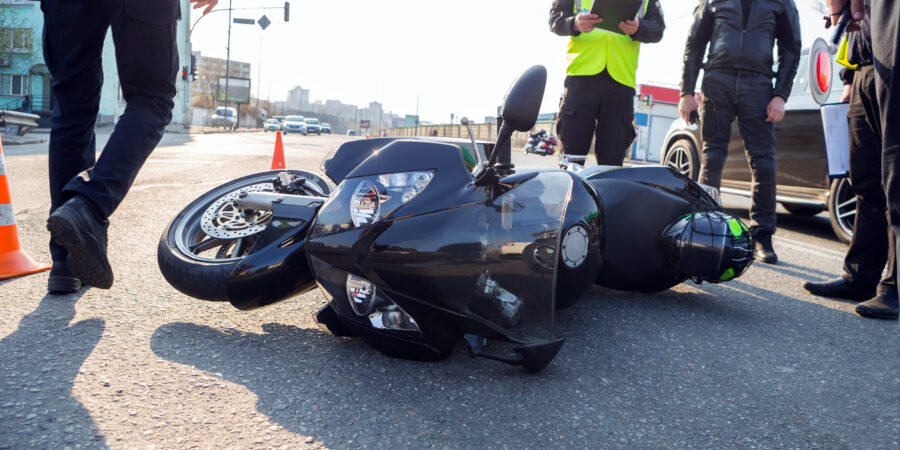Motorcycling has been gaining in popularity for several decades now. Unfortunately, motorcycle accidents have increased accordingly, not only because of the increase in numbers of motor bikes on the road, but also because of the advent of cell phone technology, which causes driver distraction.
A driver’s attention divided between a phone screen and the roadway leaves bikers at the mercy of temporarily unguided cars weighing thousands of pounds.
Not enjoying the luxury of steel frames and seat belts protecting four-wheeled motorists, motorcyclists are naked with regard to safety devices, and suffer great bodily harm in even the slightest of collisions.
According to the National Highway Traffic Safety Administration, fatal motorcycle accidents in California have increased 39 percent between 2010 and 2018. As a testament to the danger growing on California roadways, the exact same increase in fatal motorcycle crashes has been tallied among bikers taking precaution by wearing helmets.
According to finder.com Motorcycle riders face more serious injuries and fatalities than cars. Motorcycles made up 14% of all traffic deaths in 2017
An Ounce of Prevention: Rule Of Thumb In 2020
The two best ways to deal with a very bad motorcycle accident are to prevent one from happening, and to mitigate liability and injury if it does happen. Helmets are a must for the cautious biker, along with protective gear. Since skulls, flesh, bone, and skin don’t fare well upon impact with hard pavement and steel automobiles, protection is necessary for any prepared motorcyclist.
Proper vehicle insurance is not only required by law, but also is a common sense prerequisite for anyone motoring down the public way. Policies should provide appropriate levels of protection against the costs of one’s own personal injury as well as liability coverage for at-fault property damage and personal injury of others. Adequate health insurance is also mandatory for any reasonably prudent motorcyclist.
What You Can Prove
In the aftermath of an accident, the truth about the matter can be elusive for the authorities deciding fault, i.e., police and insurance companies. Police do their best to recreate the events, but the evidence left at the scene might be either inconclusive or useless in determining cause and fault.
Cameras mounted on helmets and on the bike, itself, are powerful tools in proving innocence after a motorcycle crash, and can provide incontrovertible evidence exonerating a motorcyclist against allegations of fault in a crash. The relatively small investment of a couple of cameras might pay huge dividends over the life of the motorcyclist in the event of an accident.
No Video Footage?
In the absence of video footage or material evidence such as skid marks and patterns of shattered debris from vehicles, witness testimony is the most commonly used tool for determining cause of a motor vehicle accident.
Unfortunately, testimony can be either non-existent or falsely presented. Automobiles are made to transport several people, while motorcycles are usually ridden by only one or two. This disparity can often place the motorcyclist at a disadvantage with regard to providing testimony after an accident since the word of several people can be construed to be more reliable than the word of only one.
One important rule for motorcyclists to understand is that it’s not what actually happened that matters with regard to law suits and insurance payouts; it’s what you can prove that is king. This is why the services of a competent motorcycle accident lawyer make the difference between defending against false claims made against you, and proving the truth about the actual events that occurred after an accident, and allowing the other, truly guilty party to prevail falsely in a court of law.
Motorcycle Accident Happened; Now What?
The most important thing for an innocent motorcyclist to do after an accident, if possible, is to call 911 and report the accident immediately. Do not leave the scene since this is not only a violation of criminal law, but also creates the suspicion of guilt or fault. Evidence has a way of evaporating quickly from the scene of an accident, and measures must be take to preserve it.
Since witness testimony, again, is so powerful, the victim of a motorcycle accident should urge witnesses to remain at the scene and provide statements to police. Physical evidence such as the location of fragments of tail lights, turn signals, headlights and other shattered pieces of the vehicles can help demonstrate both the speed and direction of each vehicle involved in the crash, and their placement on the ground should remain undisturbed until police arrive. Photographs of the scene can be valuable if the elements or people contaminate the evidence prior to police arrival.
If the offending vehicle flees the scene, it is important to obtain the license plate, as well as any possible descriptors of the vehicle and its occupants.
Stress-Related Amnesia
Modern medicine and law enforcement agencies have learned together that people who experience highly stressful situations, such a deadly assault or a vehicle crash, are subject to partial amnesia. In other words, one suffering a near death experience will be under great stress, even though he shows no symptoms and doesn’t even realize it, himself.
This stress can prevent a person from remembering the totality of the circumstances involved in the incident, and through no fault of his own, the accident victim might provide flawed testimony. Since, in the minutes after a crash, the victim might not remember key events during the crash, and therefore provide statements omitting those key events, that testimony given at the scene might be flawed. The idea here, is that if one provides two different stories on two different occasions, that person might be deemed to be a liar.
To combat this phenomenon, a motorcycle accident victim should explicitly state to investigating authorities that he is under great stress, and that he cannot remember the event in totality. Doctors and cops have realized that victims of highly stressful situations will not be fully able to provide reliable testimony until one to two sleep cycles after the event, translating to approximately 24 to 48 hours.
Further, the victim should seek medical treatment, even if he feels well, because this same stress might mask the pain of injury as well as dangerously high blood pressure induced by mental stress, again, even if not felt by the victim.
If you or a loved one has been the victim of a motorcycle accident with personal liability, finances, and health suffering as a consequence, seek the help of a competent lawyer to enforce your rights. Don’t allow the other, at-fault party to prevail in court cases and insurance claims.


